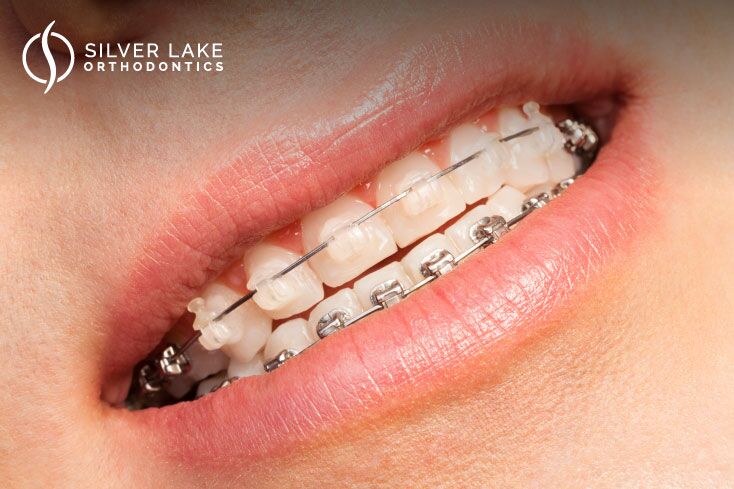More About Johnson Orthodontics
Table of ContentsAn Unbiased View of Johnson OrthodonticsThe smart Trick of Johnson Orthodontics That Nobody is Discussing4 Simple Techniques For Johnson Orthodontics6 Easy Facts About Johnson Orthodontics ShownMore About Johnson OrthodonticsHow Johnson Orthodontics can Save You Time, Stress, and Money.Getting The Johnson Orthodontics To Work
An orthodontist is a dental expert trained to detect, stop, and deal with teeth and jaw abnormalities. They correct existing problems and are educated to determine issues that may establish in the future. Orthodontists deal with individuals of every ages, from kids to grownups. People typically associate an excellent smile with excellent wellness.All orthodontists are dentists, yet not all dentists are orthodontists. Orthodontic residency programs use extensive, concentrated guideline for oral specialists. They focus on 2 areas: How to appropriately and safely move teeth How to effectively lead advancement in the teeth, jaw, and faceOnce an orthodontist has actually finished training, they have the option to come to be board accredited (https://writeablog.net/johnsonortho/johnson-orthodontics-your-trusted-mentor-orthodontist-for-braces-and-invisalign).
Getting The Johnson Orthodontics To Work
Malocclusion leads to tooth congestion, an askew jaw, or irregular bite patterns. Malocclusion is normally treated with: Your orthodontist attaches steel, ceramic, or plastic square bonds to your teeth.
Some people need a headwear to help move teeth into line with pressure from outside the mouth. A retainer is a custom-made gadget that maintains your teeth in location.

They can produce additional area in the mouth without having to draw teeth. Orthodontists make use of wires, medical screws, or plates to support your jaw bone.
How Johnson Orthodontics can Save You Time, Stress, and Money.
Throughout your very first orthodontic examination, you'll likely have: An oral examPhotos taken of your face and smileDental X-raysPanoramic (360 degree) X-rays of your face and headImpressions to develop mold and mildews of your teethThese examinations will assist your orthodontist recognize exactly how to wage your therapy. An orthodontist is a dental practitioner who's had training to treat your teeth and jaw.
An orthodontist is focused on your bite, so something like a chipped tooth would certainly be taken care of by a dental professional. Orthodontists are focused on your bite, or the method your teeth fit together, and the straightness of your teeth.
Ever before wondered just how celebrities constantly appear to have flawlessly straightened teeth? Orthodontists are oral specialists who focus on correcting irregularities in the teeth and jaws.
A Biased View of Johnson Orthodontics

Clear aligners, like Invisalign, are a prominent choice for people seeking an extra discreet therapy alternative. These removable trays are customized to progressively shift the teeth's placement (https://moz.com/community/q/user/johnsonortho). Headwear may be utilized together with dental braces or aligners to use added targeted forces, especially for fixing jaw discrepancies. In cases of narrow jaws, palatal expanders can be used to create room for correct tooth alignment.
Unknown Facts About Johnson Orthodontics
While accomplishing a stunning smile is a natural perk of orthodontic therapy, the benefits prolong much beyond visual appeals. Effectively straightened teeth and a well balanced bite add to improved oral health in a number of ways: Straight teeth are much easier to cleanse, which aids stop cavities and gum tissue illness. A proper bite enables reliable chewing, which helps in food digestion and general intestine wellness.
What is the distinction in between a dental professional and an orthodontist? All dental experts, including orthodontists, treat the teeth, gum tissues, jaw and nerves.
Orthodontists and dentists both give oral take care of clients. Orthodontists can function in a dental office and provide the very same treatments as various other dental experts. You can think of both physicians who deal with gum and teeth troubles. The major difference is that coming to be an orthodontist requires a particular specialized in dealing with the misalignment of the teeth and jaw.
Indicators on Johnson Orthodontics You Should Know
An orthodontist is a dental practitioner that has undertaken training to specialize in the diagnosis, avoidance and treatment of abnormalities in the jaw and teeth. Their training includes fixing these existing conditions (invisalign). They can also determine potential troubles in teeth placement that might create when problems are left without treatment. Orthodontists can help individuals of any ages.
This consists of all the required education to become a basic dentist. According to the American Pupil Dental Organization (ASDA), it implies you will certainly need to have either a Medical professional of Medicine in Dental Care (DMD) or a Physician of Oral Surgical Treatment (DDS). To put it simply, orthodontists need to finish dental school and then get an orthodontics specialized education.
The 15-Second Trick For Johnson Orthodontics

When you have a healthy bite, you can speak, eat and eat effectively, therefore boosting your lifestyle. Apart here from the orthodontist, we often see aides collaborating with these dental specialists in their clinics. What is an orthodontist aide called? They're appropriately called orthodontic aides. They are specialized aides, and are trained to manage dental gear and give preventative dental medical care.
Comments on “The Ultimate Guide To Johnson Orthodontics”